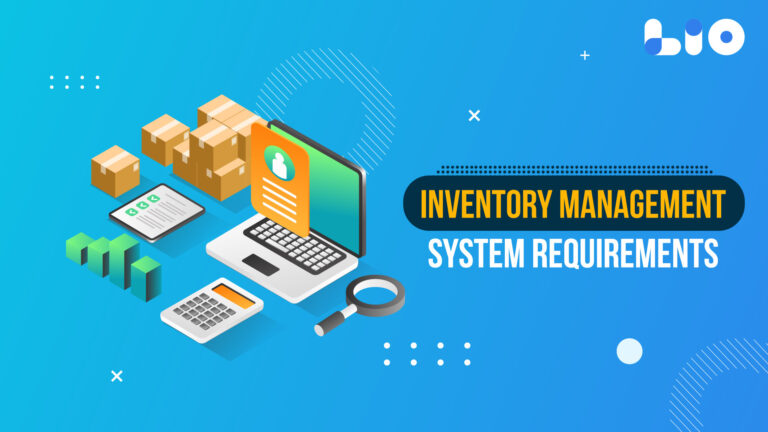Take Home Salary Calculator India

Wondering how to calculate the take-home salary? Worry not as we bring you details of how you can calculate your take-home salary in India.
In the following post, you will find all you need to know about the take-home income calculator in India. To gain a sense of the home salary calculator in India, read the article.
For the financial year 2020-2021, the Take Home Salary Calculator India has been updated: –
In India, a take-home pay calculator is also known as an in-hand salary calculator. Simply enter your annual CTC and monthly basic pay, and the calculator will automatically compute EPF, Gratuity, Standard deduction, HRA, and Professional Tax before calculating your in-hand compensation.
It’s made to display a clear breakdown of all payroll components, such as take-home pay, gross salary, and income tax. For places like Chennai, Hyderabad, Mumbai, Bengaluru, Pune, New Delhi, Noida, and Gurgaon, it should give you a decent estimate of the net take-home salary and income tax.
Most organizations, including but not limited to Infosys, Wipro, TCS, HCL, IBM, Capgemini, Mindtree, Accenture, and Cognizant, can use this online calculator to estimate their paycheck/Payslip/Salary slip.
Home Salary Calculator
The following are the elements of your pay stub
Employees in every profession are paid at the end of the month by their employers. Salary is the term for this remuneration. The amount they are paid is generally stated in their contract and pay stub.
There are several components to a wage that may fluctuate between employers. The following is a list of the most typical wage structure breakdowns.

Basic Salary
It’s a component of the Cost to Company (CTC) that companies pay to employees in exchange for their services. The base wage is typically between 40 and 50 percent of your overall pay.
This quantity cannot be calculated using a formula. It relies on a variety of criteria, including the industry, employee classification, and so on.
House Rent Allowance (HRA)

Employees who live in rental housing get the HRA from their employers. If you live in a metro city, your HRA is equivalent to 50% of your basic pay. The sum is 40 percent of your base wage in non-metro cities.
The HRA is partially or totally tax-deductible under Section 10(13A) of the Income Tax Act of 1961. The full component is taxed if you do not remain in a rental home.
Leave Travel Allowance (LTA)
Employers cover the costs of domestic travel for you and your family during a vacation. The stipend solely covers the cost of train tickets and flights. Section 10(5) of the Income Tax Act of 1961 exempts the LTA amount from tax for up to two holidays in a four-year period. To claim the tax credit, you must show evidence of travel.

Supplementary Allowance
This is a set sum that your company may give you in addition to your base income. The Special Allowance differs from company to company due to a variety of circumstances. Furthermore, it is completely taxed.
Bonus
Bonuses are a portion of the gross compensation that businesses may provide as a kind of performance incentive. The entire bonus sum is taxed in its entirety.
Also Read: What Is A Taxable Event Under GST?
Employee Provident Fund (EPF)
In most cases, it is a required savings plan. EPF contributions are required to be paid at a rate of 12% of your basic income.
Furthermore, your company contributes a matching amount to your EPF account and invests the same amount. Section 80C of the Income Tax Act of 1961 allows you to deduct up to 1.5 lakhs from your contribution.

The employer’s EPF contribution is included in the CTC and is not shown on the wage slip.
Taxation for Professionals
It is a tax that must be paid to the state government. The professional tax amount, on the other hand, cannot exceed 2,500 in any given fiscal year.
You are not alone if the breakdown appears to be complex. Calculating a salary is difficult since it involves various factors. In India, most individuals utilize a salary calculator to save time and effort. Read on to learn more about how the tool may help you with the process.
You must also be aware of the gratuity and EPF amounts
Gratuity
Under Section 10 (10) of the Income Tax Act of 1961, an employee is entitled to a gratuity if he or she has worked for the firm for at least five years.
At the conclusion of your job, your employer will give you a gratuity. You will get the gratuity amount in addition to retirement when you leave the firm to pursue work elsewhere.
Employee Provident Fund (EPF)
This benefit is mandated by the Ministry of Labor. The EPF requires that you pay a minimum of 12% of your earnings.
Your employer also makes a contribution to the EPF account in the same amount. At the time of retirement, you have the option of withdrawing the whole amount accrued.
What is the purpose of a salary calculator?
A take-home pay calculator is a computer program that calculates your net salary after taxes. It also takes into account any incentives and deductions. You must mention the entire bonus as well as the gross salary.
The calculator will calculate your CTC and display the amounts of your basic pay, HRA, additional allowances, provident fund and professional tax deductions, total deduction, net salary, income tax, and net salary after income tax deduction.
Formula for Calculating a Salary
Because pay calculations have so many variables, you’ll need to employ distinct formulae for each one. Only then can you calculate your take-home pay. Here are a few key formulae to remember.
• Gross Salary: Gross salary= CTC – EPF – Gratuity
• Gratuity: Gratuity= (Basic wage + Dearness allowance)* 15/26 * Number of Years you worked with the firm
• Taxable Liability: Taxable liability= Gross Salary – EPF/PPF Contribution – Tax-free Allowance – HRA – LTA – Health Insurance – Tax-saving Investments – Other Deductions
• Take-home Salary/Net Salary: Take-home Salary/Net Salary= Gross Salary – Income Tax – EPF Contribution – Professional Taxes
To use the Salary Calculator, follow these steps:-
Using the salary calculator is a straightforward and quick process. Take the following three steps:
- Decide whether you want to compute your compensation monthly or annually.
- To calculate the Cost to Company (CTC), enter the gross salary and total bonus amount.
- Enter the CTC’s base wage percentage.
By default, the calculator may use 50% of the CTC as the base wage. You are able to adjust it to fulfill your specifications.
Also Read: What is GST- Everything you need to know about it
The calculator will offer the following information as soon as you enter the relevant information.
- Basic Salary
- House rent Allowance
- Other Allowances
- Provident Fund
- Professional Tax
- Total Deductions
- Net Salary
- Income Tax
- Net Salary After Tax
How do you figure up your monthly take-home salary?
Your monthly take-home pay is the amount left over after all deductions have been deducted from your gross income.
Let’s look at a few instances to help us grasp the calculations:-
Assume your annual CTC is Rs. 10 lakhs and the employer provides you with a bonus of Rs. 50,000 every year. As a result, your total gross income will be CTC + bonus = 10 lakhs minus 50,000 = 9.50 lakhs.
After that, you must subtract the annual professional tax from your gross salary. The tax amount differs from one state to the next. We’ll suppose it’s 2,500 in your area for this example.
The entire EPF contributions made by you and your employer must then be deducted. The company always matches the employee’s EPF contribution. As a result, the total will remain the same.
Your EPF contribution will be equal to 12% of your maximum monthly salary limit of Rs.15,000, or Rs.1,800 per month. As a result, your yearly EPF contribution will be Rs. 21,600. Your company will also contribute Rs. 21,600.
Assume you additionally have a 3,000-dollar annual deductible for employee insurance.
As an outcome, your total deductions = professional tax + your EPF contribution + the company’s EPF contribution + employee insurance = 2,500 + 21,600 + 3,000 = 48,700.
Total annual take-home pay = gross salary less total deductions = 9.50 lakhs – 48,700 = 9,01,300
Your monthly take-home pay is now calculated as follows:
Yearly Salary/12 = Rs.9,01,300/12 = Rs.75,108.
Most individuals in India choose the take-home salary calculator to avoid laborious computations. If you use the tool, it will quickly calculate the sums from the following computations and display the results.
There are several strategies to increase your Take-Home Pay –
The Finest Methods
Below are the best ways to lower your taxable income; moreover, you don’t have to pay a dime to take advantage of these exemptions; all you have to do is invest the money for a few years.
- Invest up to 1,50,000/- in ELSS, NSC, LIC, Home Loan, PF, PPF, and Pension under Sections 80C, 80CCC, and 80CCD of the Income Tax Act.
- Invest up to 20,000/- in infrastructure bonds under section 80CCF, with a 5- to 15-year lock-in term.
- If your work offers meal vouchers, make use of them.
- Put some money in a savings account, and the interest you receive is tax-free up to 10,000/-.
The Second Best Methods
If you’ve exhausted the aforementioned allowances and are looking for further ways to save money, you can take advantage of the exemptions listed below. But keep in mind that there is no free lunch here; you must put in some effort to save money.
- If you want to buy a property, a home loan can save you up to 350,000/- in taxes.
- You may also look into RGESS, but you will only be eligible for a 50% exemption, and you must not have previously traded through a DEMAT account and have a salary of less than 10,00,000/-.
The Rest
In order to save tax in this category, you must really spend this money –
- If you are a higher-rate taxpayer, why not take a vacation and save 33%, so you only pay 67 percent of the cost of transportation; however, only two trips are allowed in a four-year period.
- Purchase medical insurance for your family and parents for up to Rs. 35,000/-, which would be tax-free.
The Take-Home Pay Calculator Has The Following Features
- It calculates your net salary, income tax, PF, EPF, and gratuity. This clarifies your salary breakdown and aids in your comprehension of the various compensation components.
- Compares your Take-Home Salary, Gross Salary, and Cost to Company (CTC). This is done to emphasize the difference between Gross Salary and CTC.
- Calculates your present tax savings and assists you in identifying additional tax savings. This makes it simple for you to grasp the numerous tax-saving options accessible to you.
Also Read: How to Start an Online Clothing Business

Maximize Your Online Business Potential for just ₹79/month on Lio. Annual plans start at just ₹799.
Conclusion
A salary calculator may be used to acquire an average pay in your profession, negotiate your wage, or analyze a career shift, albeit it is not 100 percent accurate in all cases. Use it correctly and you will get the benefits of this instrument.
Frequently Asked Questions (FAQs)
Is it possible to calculate TDS using the payment calculator?
The TDS is not calculated separately in the salary calculator. The TDS amount is easily seen on your pay stub.
Do the deductions show up in the salary calculator?
Yes, the professional tax and provident fund deductions are shown in the calculation. It also shows the overall amount of deductions.
What is the difference between a CTC and a take-home pay?
CTC stands for Cost to Firm, which covers all monetary and non-monetary advantages provided to an employee by the company, while take-home pay is the amount paid to an employee after all deductions have been made.
How do you use a salary calculator to figure out your monthly take-home pay?
Deducting income tax, employee provident fund, and professional tax from gross compensation yields take-home pay.
Does the company’s expense include the provident fund?
All monetary and nonmonetary advantages received by an employee are included in the cost to the firm. The provident fund is also included.
What is the difference between the Financial Year and the Assessment Year?
A financial year is a calendar year that is used for taxation and accounting. It starts on April 1st and finishes on March 31st of the following year.
On the other hand, the assessment year is the year in which you file your taxes. It is the year in which your revenue from the previous fiscal year will be assessed.

















